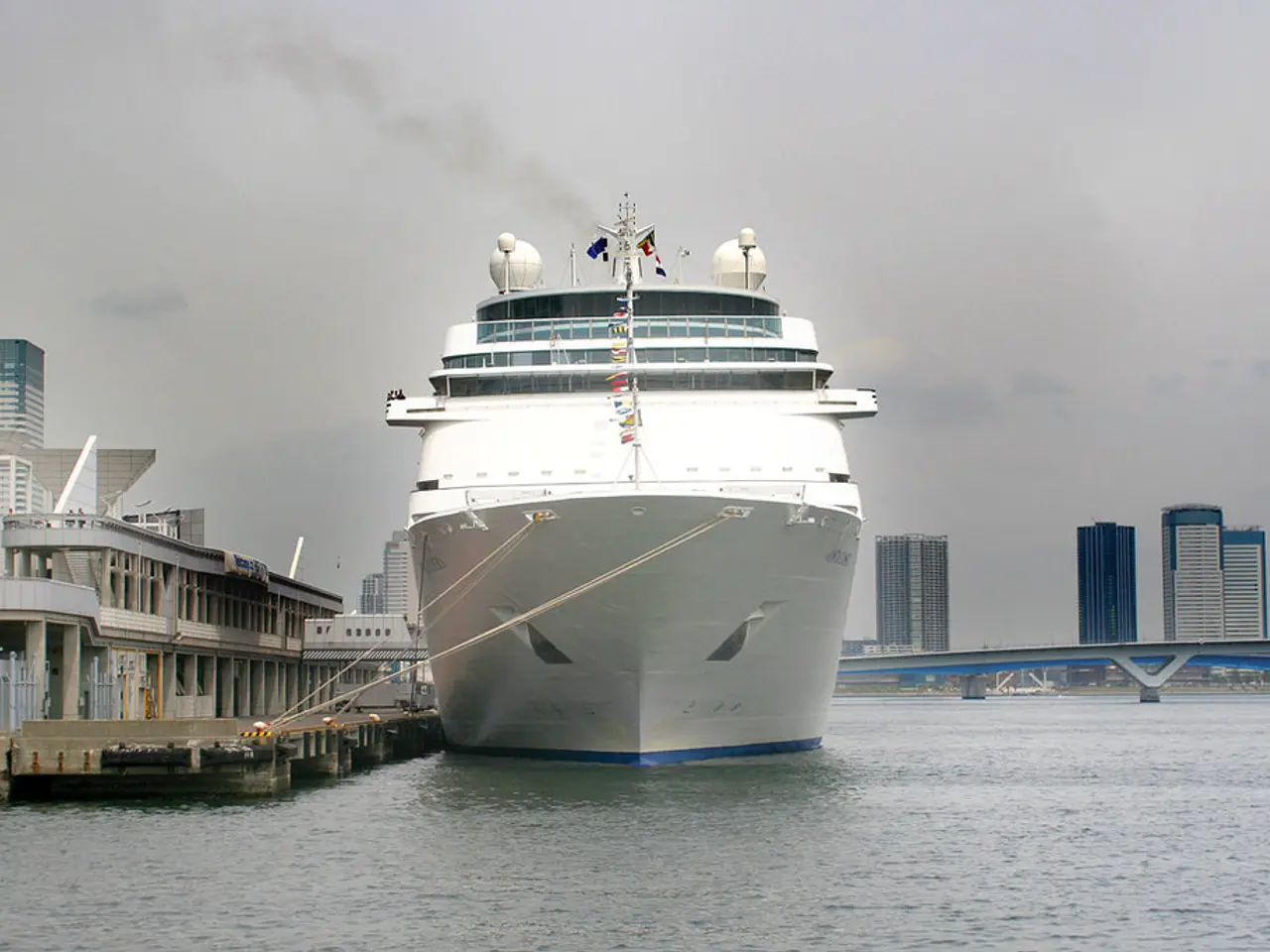Massive demonstrations against the proposed construction of a bridge connecting Sicily to mainland Italy
Controversial Strait of Messina Bridge Project Clears Major Hurdles in Italy
The Strait of Messina Bridge project, a long-debated plan to connect Sicily to the rest of Italy, has received final government approval as of August 6, 2025. This ambitious project aims to build the world's longest suspension bridge, spanning nearly 3.7 kilometers and surpassing Turkey's Çanakkale Bridge [3][4].
The project's scale and engineering challenges are significant. The bridge will span approximately 3.6 kilometers with a suspended span of about 3.3 kilometers, surpassing the current longest suspension bridge globally. It will carry four traffic lanes and a double-track railway, designed to handle up to 6,000 vehicles and 200 trains daily [1][2][3][4]. Construction materials have been tested to withstand winds up to 181 mph, salt corrosion, and seismic activity, although the area remains seismically active and erosion-prone.
However, the project faces opposition from environmental groups, local residents, and activists. Concerns about the project's potential impact on migratory birds and local ecosystems have led to complaints being lodged with the European Union [1][2][4][5]. Approximately 500 families would be displaced due to the construction, contributing to the social concerns. A movement named "No Ponte" ("No Bridge") has mobilized tens of thousands of protesters, particularly in Sicily, highlighting fears about the project's scale, safety risks from earthquakes, environmental damage, and mafia-related corruption [1][5].
There are longstanding concerns about the infiltration of mafia organizations such as Cosa Nostra and 'Ndrangheta into major construction projects in southern Italy, including this one. This specter adds to the distrust and opposition from locals and activists [3][5].
The project has a controversial history of approvals and cancellations since 1969, often tied to budget constraints and political changes. The current revival under Premier Giorgia Meloni’s government and support from Transport Minister Matteo Salvini frames the bridge as a potential economic stimulus and development accelerator for southern Italy, with an estimated cost of around €13.5 billion ($15.5 billion) [3][4].
The Italian government has indicated it would classify the bridge as defense-related, which could support Italy's commitment to raise defense spending to 5% of its gross domestic product (GDP), as targeted by NATO. The proposed bridge would reduce the time to cross the strait by ferry from up to 100 minutes to 10 minutes by car, and trains would save 2/12 hours in transit time [3][4].
Preliminary work for the Strait of Messina Bridge could begin as early as late September or early October, pending approval from Italy's Court of Audit. The project is estimated to create up to 120,000 jobs annually and help stimulate economic growth in southern Italy [3][4].
Despite the project's potential benefits, protesters remain vocal in their opposition. Salvini, a key figure in the project, has pledged that keeping organized crime out of the project is a top priority [3][4]. Italy's president has insisted that the project remain subject to anti-mafia legislation that applies to all large-scale infrastructure projects [3][4].
In summary, while the Strait of Messina Bridge project has recently cleared major regulatory and political hurdles to begin construction, it remains highly controversial, facing opposition due to its large scale, environmental concerns, seismic risk, and fears of mafia involvement [1][3][4][5].
- Despite the Strait of Messina Bridge's potential to stimulate economic growth and defense spending, it faces persistent opposition, in part because of concerns about its environmental impact on local ecosystems and migratory birds.
- Since the initiation of the Strait of Messina Bridge project in 1969, it has been a subject of continuous political debates and controversies that are often linked to budgetary constraints and periodic changes in government.
- As the project moves forward, Italy's president has emphasized the necessity to adhere to strict anti-mafia legislation to ensure that organized crime does not infiltrate the project, given the history of mafia involvement in major construction projects in southern Italy.
- In the realm of environmental science and policy-and-legislation, the concerns about the project's possible impact on local ecosystems and migratory birds have been shared with the European Union, highlighting the clash between business interests and environmental considerations.
- As the Strait of Messina Bridge project progresses, general news media outlets will likely continue to cover the project extensively, owing to its significance in the economic, policy, and environmental spheres of the world, as well as the ongoing political debates and protests surrounding it.








